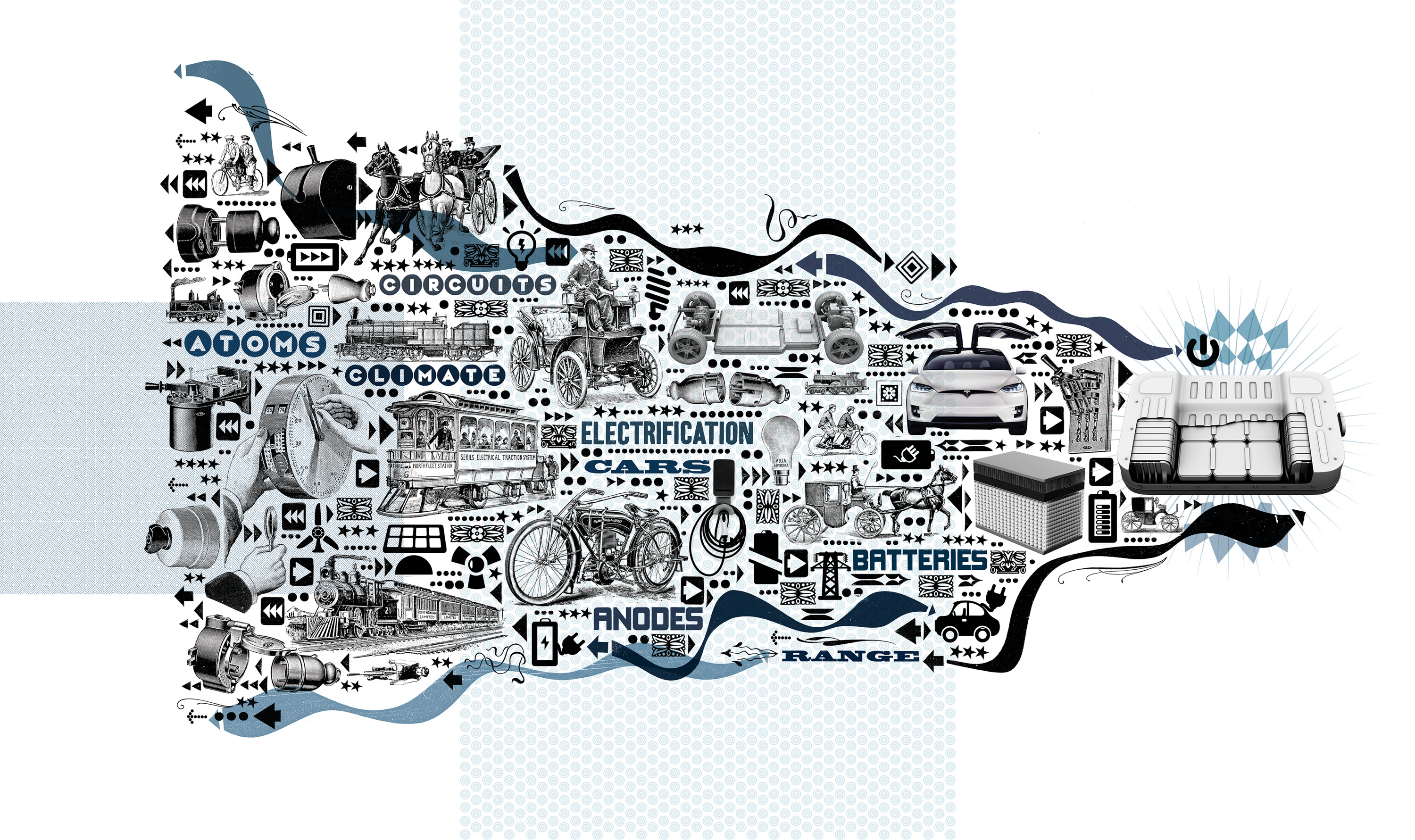How does an EV battery actually work?
Are lithium batteries sustainable enough to fulfill the dream of the electric-car revolution?

The batteries propelling electric vehicles have quickly become the most crucial component, and expense, for a new generation of cars and trucks. They represent not only the potential for cleaner transportation but also broad shifts in geopolitical power, industrial dominance, and environmental protection.
According to recent predictions, EVs will make up just over half of new passenger car sales in the US by 2030. One estimate suggests that the potential growth of the global battery market could require 90 more facilities the size of the Tesla Gigafactory to be built over the next decade.
Lithium-ion batteries, also found in smartphones, power the vast majority of electric vehicles. Lithium is very reactive, and batteries made with it can hold high voltage and exceptional charge, making for an efficient, dense form of energy storage. These batteries are expected to remain dominant in EVs for the foreseeable future thanks to plunging costs and improvements in performance.
Right now, electric-car batteries typically weigh around 1,000 pounds, cost around $15,000 to manufacture, and have enough power to run a typical home for a few days. While their charging capacity degrades over time, they should last 10 to 20 years.
Each battery is a densely packed collection of hundreds, even thousands, of slightly mushy lithium-ion electrochemical cells, usually shaped like cylinders or pouches. Each cell consists of a positive cathode (which typically contains metal oxides made from nickel, manganese, and cobalt); a negative, graphite-based anode; and a liquid solution in the middle, called an electrolyte.
This is where lithium’s reactivity comes into play; its loosely held outer electron can easily be split off, leaving a lithium ion (the atom sans its outer electron). The cell basically works by ping-ponging these ions and electrons back and forth.
During the charging cycle, an electric current introduced via an external source separates the electrons from the lithium atoms in the cathode. The electrons flow around an outside circuit to the anode—which is typically composed of graphite, a cheap, energy-dense, and long-lasting material that excels at storing energy—while the ionized lithium atoms flow to the anode through the electrolyte and are reunited with their electrons. During discharge cycles, the process reverses. Lithium atoms in the anode get separated from their electrons again; the ions pass through the electrolyte; and the electrons flow through the outside circuit, which powers the motor.
EV expansion has created voracious demand for the minerals required to make batteries. The price of lithium carbonate, the compound from which lithium is extracted, stayed relatively steady between 2010 and 2020 but shot up nearly tenfold between 2020 and 2022, spurring new investments across the globe. More than a dozen battery plants and numerous potential mining projects are in development in the US alone.
But the quest for raw materials comes with extensive environmental, political, and social costs.
The vast majority of cobalt, a common cathode component, comes from the Democratic Republic of the Congo, infamous for child and forced labor. Much of the US supply of raw materials is on tribal lands. Chile, a key producer of lithium, wants to wrest control of production from multinationals. Meanwhile, mining companies and entrepreneurs have plans to mine the seabed for minerals, which could damage a fragile, poorly understood ecosystem (Chile is pushing a moratorium on such ocean mining).
Battery developers seek to cut back on the use of rare metals and improve recycling. Startups and automakers are also racing to design and build next-generation batteries that eliminate material challenges and boost efficiency. A new generation of lithium-ion batteries has already eliminated the use of cobalt, for instance. Scientists have also tested sodium-sulfur batteries, made from much cheaper and more abundant raw materials, and solid-state batteries, which—as the name implies—replace the liquid electrolyte with solid compounds. They may offer a lighter, more stable, faster-charging alternative.
Forecasts suggest that EVs will achieve price parity with cars based on internal-combustion engines in just a few years, accelerating adoption. And experts predict rapid expansion, consolidation, and experimentation in battery manufacturing as countries and companies race for a position among the sector’s dozen or so dominant players. The tiny trip ions take between the cathodes and anodes of battery cells will likely become one of the most important journeys of the next decade.
Deep Dive
Climate change and energy
The problem with plug-in hybrids? Their drivers.
Plug-in hybrids are often sold as a transition to EVs, but new data from Europe shows we’re still underestimating the emissions they produce.
Harvard has halted its long-planned atmospheric geoengineering experiment
The decision follows years of controversy and the departure of one of the program’s key researchers.
Why hydrogen is losing the race to power cleaner cars
Batteries are dominating zero-emissions vehicles, and the fuel has better uses elsewhere.
Decarbonizing production of energy is a quick win
Clean technologies, including carbon management platforms, enable the global energy industry to play a crucial role in the transition to net zero.
Stay connected
Get the latest updates from
MIT Technology Review
Discover special offers, top stories, upcoming events, and more.